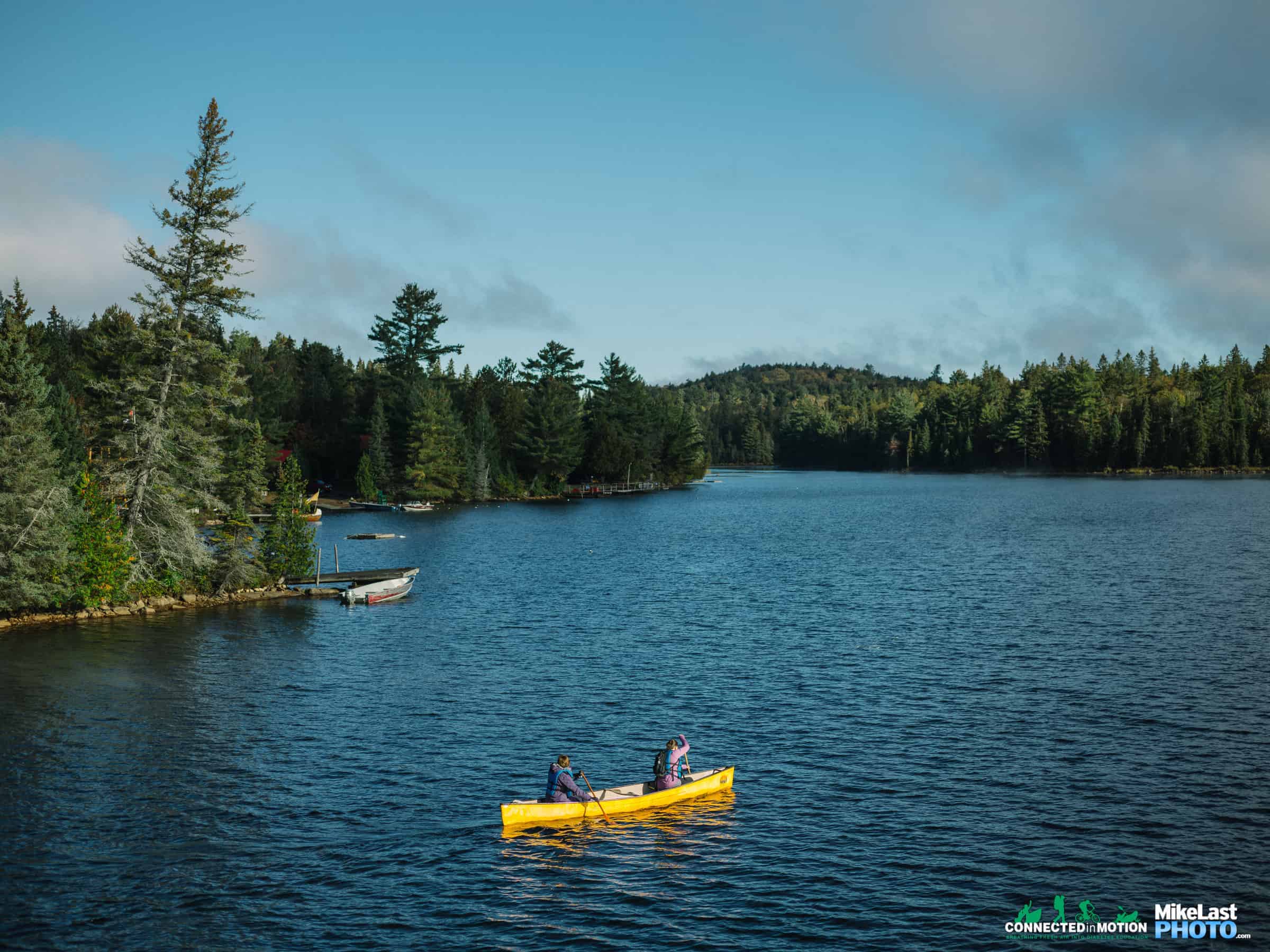CIM Note: We wanted to bring you a different perspective on our Slipstreams. In the coming weeks, we’ll be featuring a mini-series of blogs by Brad Lee. He experienced Summer Slipstream in his first ever Slipstream experience this year. His reflections, observations and letter home are all chronicled in the following posts. You can read part 1 of his story here.
First light came early. I wondered when we’d be giving up daylight savings time. The weather was a frigid – and wet – reminder that it would be soon. But there was no announcement on the radio, and time was a detail that I’d often lost track of. There were puddles in the parking lot, the sky was a uniform grey, and it appeared that I might be the only one awake.
My muscles were sore. My neck hurt, but I was eager to put a bad night’s sleep behind me. The hostel kitchen’s microwave delivered a hot bowl of chia seeds, almond milk and peanut butter for breakfast. I scrounged a slightly bruised banana from the community larder, and then struck up a conversation with a visiting German student, whom I’d passed hitchhiking on the way in. I agreed to drop him off, after breakfast, at the trailhead to Mizzy Lake. This also served as the access point for the winding road around Canoe Lake to Tepee Lake, where Camp Arowhon was marked at the end of a dirt track. It poured rain all the way. I felt a little sorry for my new friend, whose sneakers were now soaked through. But he seemed to be in good spirits, so I said good-bye, and drove on up the trail.

Forestry trunk roads never follow a straight-line survey. They usually appear to be haphazard creations of unplanned exploration. But the important part to remember is the number of forks in the road, and which way you’ve travelled up or down them. I remember my uncle once telling me that an inverted “Y” in the bush likely points to the way out. I didn’t know why this crossed my mind, but it did seem relevant as the trees crept in closer, sometimes brushing the sides of my car. The road was still in pretty good shape despite the steady rain, and I didn’t really want to think how much more water it would take before it got washed out.
I was trying to judge where I was exactly, using a combination of a topographic map, and a fading cellphone signal on Google Maps. The woods were lush and dense around rushing creeks, which surely held brook trout, and there was no point trying to triangulate anything. Then all of a sudden I drove into a clearing, where I met Sarah, a fellow Slipstreamer who guarded access to the last leg to Arowhon. Politely, but firmly, she told me I was a few hours too early, and suggested that I might have a hot lunch back at Canoe Lake where I’d find The Portage Store, a provisioning outpost for greenhorns and forgetful last-minute wilderness trekkers.
The road back to Canoe Lake seemed shorter. I thought about wandering up the Mizzy Lake trail to find my breakfast pal, and a rumoured patch of rare pitcher plants that another hosteller had mentioned, but the ground had become too soggy, with the trail mud absolutely squishy underfoot. Rather than making a beeline for Canoe Lake, I thought it might be more fun to wander up the road to the posh settings of Arowhon Pines Resort. It was a good road, and might even have been paved at one time, with a little loose gravel on top, and evidence that someone had filled the worst of the potholes. When I got to the end of the road and the parking lot, it was pouring harder. I grabbed my raingear, cracked the door, and caught a breath of fresh pine. The rain pounded the top of my car. I ran for the central lodge and its wraparound patio with its protective awning, and slumped down in a rough-hewn Muskoka chair.
There was a dock in the bay, ringed by a narrow footpath that connected lodge guests to their cabins. It all looked pretty rustic, except for the tidiness of the place. Even the canoes were stacked neatly, overturned and up on the dock. A lone couple paddled into the bay, tied up their canoe and darted inside. A few other guests were at the other end of the patio. I couldn’t hear their conversation, but they were wrapped up in wool blankets, and seemed resigned to the weather. I checked out the daily menu, and found a selection of fine Ontario cheeses, and entrée offerings of roast chicken, flank steak and pickerel, in some sort of reduction. I decided that lunch back at The Portage Store sounded like a good idea.

I’d be lying if I said I didn’t think again about bailing from camp, but by then I was intrigued by what might lay around the last few twists of trail, and my nervousness was fading. Heck, there might even be a fish or two to catch. The Portage Store was well stocked, but I couldn’t think of anything that I needed. Lunch wasn’t all that special, but the chili was hot and filling. Outside and in spite of the rain, scores of ill-equipped tourists were renting canoes, paddles and life vests for self-guided tours. Canoe Lake is famous for being the place where one of Canada’s most famous artists, Tom Thomson, mysteriously drowned in 1917. Thomson captured the character and spirit of Canadian Shield country with his sketches and paintings, and he influenced what would later become the iconic Group of Seven artists’ collective.
There was a break in the rain, or at least it wasn’t pounding down as hard. I hopped back in my mud-spattered hatchback, and drove back to find Sarah shivering beside her car with its broken heater. I asked if she wanted to sit in my car to warm up, but she said she was okay, and gestured towards camp. Seems the delayed opening had something to do with a Greyhound-sized bus missing a tight turn, and swerving into a bridge. I passed the broken-down bus at a widening of the single-track road, and wondered how the heck anyone could get in to tow it. More likely, they’d have to fix it on the spot. But it wasn’t my worry, so I drove on. A little past Checkpoint Sarah, I drove up beside a high-riding pickup truck. The driver shared that he and his passenger were also headed to camp. He seemed a little doubtful about the road, but I figured if I could do it in my city car, he’d have no problem. A short time later, I wondered where he’d disappeared, after scooting ahead and not seeing him again until I’d parked at a cluster of buildings, and followed the signs to the registration desk.
Camp Arowhon is fairly well-known among Ontario’s summer campers and cottagers. It’s known as the camp for the posh kids from Toronto and elsewhere in southern Ontario. A friend told me as kids they’d made fun of Arowhon campers, but it was only because it had a reputation for a great dining hall and all the best gear to make summer camp fun. It’s actually a family business, and the camp wasn’t too far down the trail from the five-star Arowhon Pines Resort, which at one time or another was run by the present owner’s grandmother. Both camps had great central buildings and out buildings and cottages, variously equipped with plumbing or without, and degrees of comfort.
I opted for the only heated dormitory at the kids’ camp, and scored an individual room, likely meant for a camp counselor. The building was well kept, if not a tad rustic, with bare light bulbs, a couple washrooms, and the heavy scent of pine from fresh-cut plywood flooring and walls. There was a bare mattress on a simple wood frame for a bed, and I was glad to have brought my own sleeping bag. I cranked the heat and waited for the other campers to show up.
About Brad Lee
 Brad Lee is a recovering journalist and avid fly angler who’s as happy chasing fish, in rivers or by Hobie kayak, as he is introducing others to the sport. Sixteen years on, he’s still learning to live well with Type 1 diabetes. He enjoys sharing good food with friends, cooking, travelling and exploring Ontario and the world.
Brad Lee is a recovering journalist and avid fly angler who’s as happy chasing fish, in rivers or by Hobie kayak, as he is introducing others to the sport. Sixteen years on, he’s still learning to live well with Type 1 diabetes. He enjoys sharing good food with friends, cooking, travelling and exploring Ontario and the world.





Admit it Brad, you loved my high ridin pick-up. Great stroy man. keep up the good work.